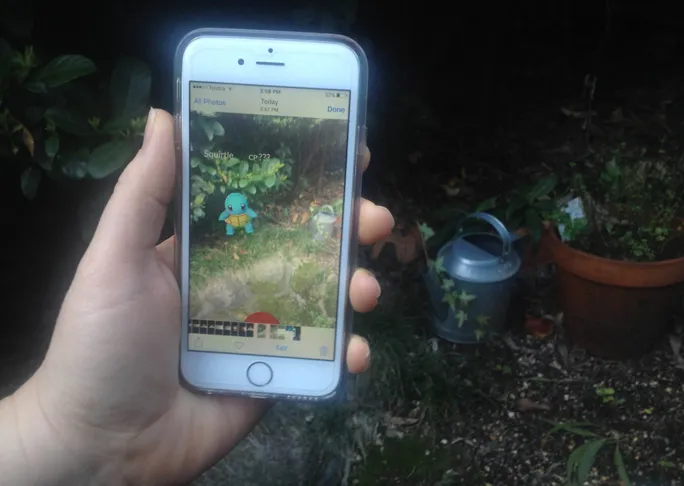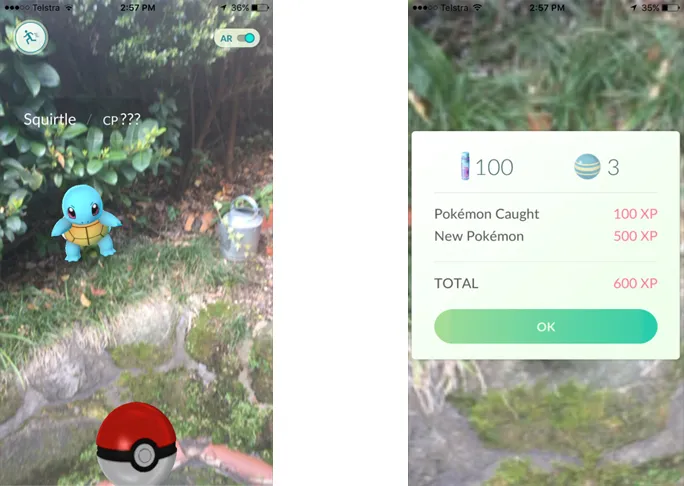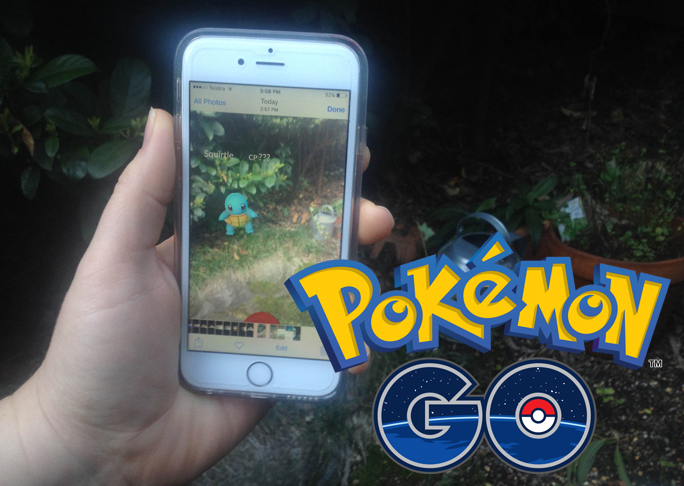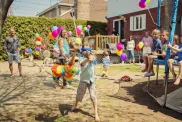
My son has been a mad Pokémon fan since forever and he’s been champing at the bit to get into Pokémon GO. I’m all for it, but because we’re talking about an augmented reality app that allows him to interact with virtual strangers, I decided to do a bit of research before I let him loose. Here’s everything I’ve found out that might help you decide whether Pokémon GO is right for your kids too.
What is Pokémon Go?
It’s the latest offering from the Nintendo-owned Pokémon franchise – a mobile app that ‘s free to download on iOS and Android. You might have noticed people randomly walking your neighbourhood holding their phones up and looking around feverishly? They are most likely playing this app (and if they’re not, back away slowly). This is the dream of Pokémon fans across generations brought to life: what if Pokémon was real?
Put simply, Pokémon GO uses your mobile phone’s GPS and clock to pinpoint where you are in the real world and make Pokémon appear around you on the app’s screen. You then try to catch the Pokémon. It looks like this (this is right outside my back door):

How Do You Play?
The app encourages you to get out and about and find more Pokémon, catching them with Pokéballs. You’ll quickly find yourself walking up and down streets looking for the little blighters – I know I did. You’ll also be looking for PokéStops, which are essentially real-world locations marked in the game on your map. They are most likely going to be at landmarks that are visible on GPS – think big parks, shopping centres, bridges, public art. You can go to a PokéStop to collect items, including Pokéballs and eggs that can hatch into Pokémon. Be warned – finding and going to PokéStops can be a pain, so at some stage your kid is most likely going to hit you up for $1.49 to buy 20 Pokéballs without having to go to a PokéStop. Yep, of course there are in-app purchases!
What Does it Cost?
Aside from buying extra Pokéballs (see above), you can also buy PokéCoins. Don’t you love spending real money to buy virtual money? Me neither. PokéCoins are this game’s currency and you exchange them for power-ups, extra items and other game enhancements. The good news is, you can get by just fine without spending a cent, so be sure to turn off the in-app purchases before you let the kids go wild looking for Pokémon.
How Is It Social?
Along the way, just like in the gamer and TV versions of Pokémon, kids can ‘battle’ other people to catch new Pokémon or make their existing Pokémon bigger and stronger so they can evolve. You do this by finding a gym – clearly marked on the in-game map and generally located at a prominent landmark. Gyms are the only places where Pokémon battles can take place and as I haven’t located a local gym, I haven’t experienced this social part of the game yet. As with any virtual or real-life contact your kids may make with people they ‘meet’ online, be very cautious before you let this side of the game happen for your kids. You can find out more about how gyms and battles work over on this Forbes article and watch this video from Polygon for a really good overview:
Is It Okay for Kids?
Finding the Pokémon is instantly addictive. I was only supposed to be playing the game for ‘research purposes’, but I quickly found myself champing at the bit to play for just a little bit longer. I must have walked more than 3 kms without even noticing, so engrossed was I in chasing down the Pokémon and finding a PokéStop to refuel on Pokéballs. At one point I was tempted to leap the fence into a neighbour’s front yard because I was convinced there was a Pokémon on the other side. Let that be a warning for you: this game may encourage the kids to trespass and generally get into places they really shouldn’t. Which brings me to my neat list of Pros and Cons of the game:
Pros and Cons of the Game
Pros
Entertaining – it’s basically just a whole lot of fun.
Active – this game encourages kids to move – A LOT.
Outdoorsy – the game gets the kids OUTSIDE. Our favourite place for them to be.
Interesting – You get to know your neighbourhood more than ever before.
Well-structured game play learning – it enhances planning and goal-setting skills.
Social – if you manage to find a gym and get into the Pokémon battles it offers virtual and real-life social opportunities (see cons below!).
Free – if you can resist the lure of shortcuts via in-app purchases.
Cons
It’s still screen-time.
May be dangerous – keep kids in check with clearly defined rules around where, when, how and especially with who they can play with. This is a mega-stranger-danger warning.
Distracting – there have already been reports of Pokémon GO injuries caused by people ramming into things or falling off things because they are walking around looking at their phone… stay alert.
Anti-social – yes, it’s got a social element, but the flipside is that your kid is entirely immersed in game play and not particularly interested in whatever else is going on around them. They will be out and about, yes, but they will still be viewing the world through a screen, not their own eyes.
No age limit – this isn’t a game made just for kids – teens and adults are playing too. There is a risk of exposing your child to adult-concepts.
Highly addictive – if you’ve got kids who tend to get immersed in game-play, it might not be a good idea to introduce them to this one.
Expensive if you make the in-app purchases available – you might want to switch these off. It also chews through your phone’s data, so there is an expense attached to that.
Chews battery power like no other app on earth. This video from Recombu includes some necessary tips for extending battery life:
The Verdict?
The age recommendation on the app store for this game is 9+ stating that it contains “Infrequent/Mild Cartoon or Fantasy Violence“. It’s your call, but I reckon younger kids would superficially enjoy the basics of the game – finding and catching the Pokémon – if you supervise them throughout and accompany them as they walk the streets. It’s a fun way to enhance an afternoon walk around the block! As always, it’s up to the parent to decide if something is okay for their kid.
Max is 12 and I’ve been in there and played the game myself, so it was a no-brainer for me: he can play. I think it would almost be cruel to keep him away, given his existing love of all things Pokémon. So, I’m fine for him to wander the streets looking for Pokémon, provided he takes a friend and they watch out for each other. I’m not fine for him to make in-app purchases or battle at a gym unless he knows the people he’s battling in real life too. That might be tricky for him to monitor, but I will need to trust him to make good choices. That’s what parenting comes down to after all.
Are you Pokemon GOing at your place?
Click here to check out our round up of Pokemon GO activities (non screen but still Pokemon — yay!).
More about our kids’ digital life:




